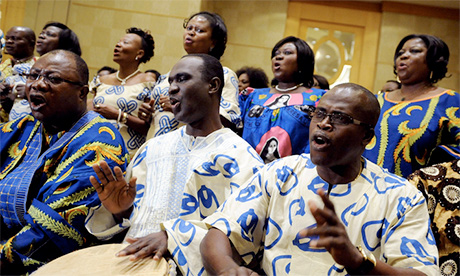After growing up Baptist, Nate Tinner-Williams became a Roman Catholic in December 2019.
Now, after a move to New Orleans, he is planning to enter the seminary of the Josephites, an order of brothers and priests who have ministered specifically to the African-American community since 1893. In the meantime, he has devoted himself to developing Black Catholic Messenger, an online publication he co-founded in October 2020.
I spoke with Mr. Tinner Williams about his faith, the Black Catholic Church in the United States and the hope of reviving a proposal for a uniquely African-American way of celebrating the Mass, in light of Pope Francis’ recent calls to inculturate the liturgy.
What do you hope people understand about the idea of an African-American rite?
That it has nothing to do with segregation. Recognizing and even creating Black institutions, in America especially, is not segregation.
Segregation was when white people were excluding Black people. Black people creating things for themselves is not segregation.
How do you understand the role and power of inculturation in the Catholic Church? What is the significance of cultural rites?
It shows that the church is truly Catholic, in the sense of being universal, which is evident throughout history.
The diversity of the church is expressed when it says, “We recognize your culture and your culture in fact should be a part of your Catholicism, right down to the way you sing your songs, preach your homilies and overall celebrate and worship Jesus.”
There are precedents for it because, as Catholics should know, there are 23 Eastern Catholic churches that do exactly that and that have done so for centuries or even millennia. For that process to continue to occur—there’s nothing “un-Catholic” about that.
Why is an African-American rite so important?
We are in some ways a nation within a nation.
We’re not completely at home, in my opinion, within America; we were more or less excluded from it for over 500 years, now.
So we’re still in that process of trying to figure out: Where do we fit in?
And it seems that the church, especially in America, is still trying to figure out where they’re going to let us fit in.
What do you envision for an African-American rite? What might be included in this rite?
Well, it would certainly have a hell of a lot of gospel music.
It might even involve changing some of the propers of the Mass, like the “Hallelujah” and the Kyrie, changing those to a gospel song themselves (which many Black parishes do now).
It will probably involve some dancing. The Zaire rite itself switches the sign of peace and moves it earlier in the Mass, to before the consecration of the gifts.
I’ve been in some Black parishes here in the U.S. that adopt some of those changes in the Mass, so they’re doing a kind of fusion between the gospel Mass and Zaire use.
I imagine those changes might be integrated into an African-American rite. Beyond that, I don’t know that I have any particular theories about what a Black Catholic rite would like, but I do know the music would be different, for sure, and the vestments would be particularly Afro-centric—which again, many Black Catholic priests use now, but in an unofficial capacity, I guess.
What would the African-American rite mean to you specifically in your experience?
The Black Catholic rite would personally mean a new chapter, a new era for Black Catholics in America, especially from a clerical perspective.
Priests would have to learn about how to celebrate that rite.
It would become part of the education of becoming a Black Catholic priest, who is going to work with Black Catholic people and Black Catholic parishes; it would change a lot of things for me.
We will probably have seminaries dedicated to priests who are going to serve in those parishes. That’s one thing Black Catholics have never had really: a seminary of their own.
It would open the floodgates to all those kinds of institutions and structures within the church that we’ve kind of been asking for—or needed—for 200 years.
The church has kind of just slammed the door in our face, especially the church in the U.S, so having a rite would fling some of those doors open. Read more
Additional readingNews category: Analysis and Comment.




